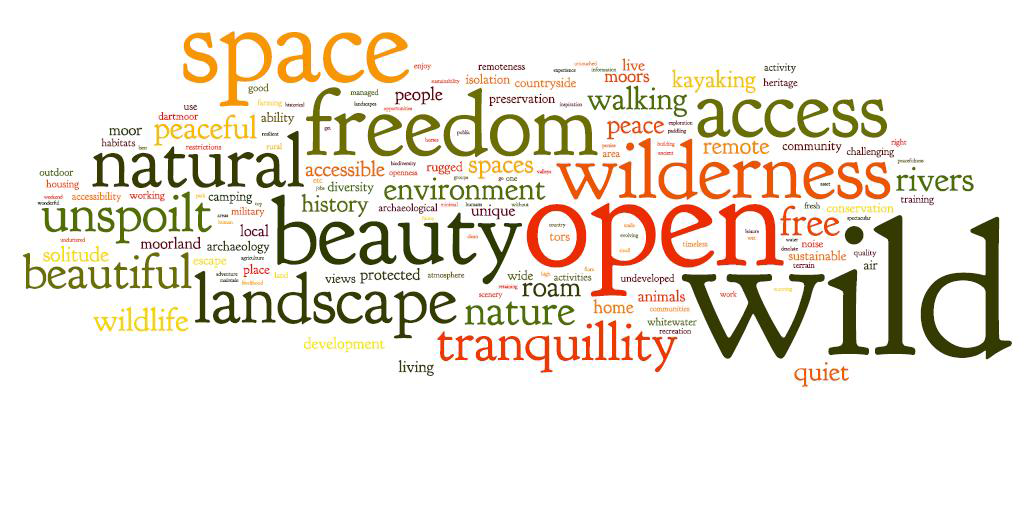Special Qualities
Dartmoor has a very special place in people's appreciation of Devon and the wider south west of England. The special qualities of the National Park identify what is distinctive about Dartmoor, and help to identify what is most important to be conserved, enhanced and enjoyed.
Dartmoor's special qualities include:
open, windswept upland moors with far reaching views and a sense of remoteness and wildness, distinctive granite tors surrounded by loose rock or 'clitter', and large expanses of grass and heather moorland, blanket bogs, and valley mires providing habitats for distinctive wildlife such as skylark and cuckoo, and rarities including Vigur's eyebright and southern damselfly;
sheltered valleys with upland oak woodland, rhôs pasture and fast-flowing boulder-strewn rivers, home to characteristic wildlife including the pied flycatcher and salmon, and rare species such as the marsh fritillary butterfly;
enclosed farmland with small irregular pasture fields bounded by dry stone walls and hedgebanks providing a mosaic of different wildlife habitats, including hay meadows and species rich dry grasslands with wildlife such as the beautiful greater butterfly orchid;
a varied geology, including the granite bedrock providing the dominant building material throughout history, and a wide range of valued minerals including tin, copper, lead, silver and arsenic;
timelessness - a place spared many of the intrusions of modern life, with dark night-time skies;
tranquillity, where it is possible to find absolute peace, offering spiritual refreshment and opportunities for quiet reflection, escape and creativity;
unrivalled opportunities to roam at will over the extensive open moorland, and an exceptional rights of way network for walking, riding and cycling;
traditional farming practices, using the moorland commons for extensive grazing of hardy cattle, sheep and ponies including locally distinctive breeds;
clean water, the catchment area for most of the rivers of Devon – historic leats still supply water to surrounding settlements. The peatlands and open water of the reservoirs provide an important water store helping to regulate the flow of water off the moor;
one of the most important archaeological landscapes in western Europe revealing a chronology of human activity stretching back over 8,000 years, from ancient field systems to the legacy of tin mining;
a wealth of historic buildings, structures and townscapes, including a strong medieval settlement pattern of scattered farmsteads, hamlets, villages and towns, set within enclosed farmland surrounding the open moor and linked by an intimate pattern of sunken lanes;
resourceful rural communities with distinctive culture and traditions, characteristic ways of life, local crafts, fairs, food and drink;
an inspirational landscape of legends and myths that has inspired art and literature through the centuries and continues to inspire;
opportunities for discovery, challenge and adventure for all.
The words below illustrate how people responded when asked to describe Dartmoor and what it means to them.
